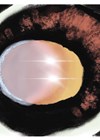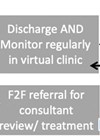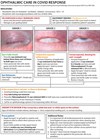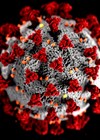Trainees
Ophthalmology specialty training applications: a costly affair?
Ophthalmology is one of the most competitive specialties to pursue training in worldwide. In the United Kingdom, the ST1 entry national selection competition ratio for the past few years has ranged between four to five applicants per post [1]. The...
The Duke-Elder exam: A medical student’s head start into ophthalmology
The Duke-Elder exam is a specialist ophthalmology exam intended for medical students to sit during medical school. It is named after Sir Stewart Duke-Elder, a pioneering Scottish ophthalmologist who was active in the first half of the 20th Century by...
“Beware of the pigment”
Using some captivating artwork, Iheukwumere Duru describes key features of pigment dispersion syndrome. Pigmentary dispersion syndrome (PDS) leads to pigmentary glaucoma (PG) in approximately 35-50% of patients with the condition [1]. PG is the leading cause of non-traumatic blindness in...
Sustainability in eyecare: Are virtual clinics the way forward in the diagnosis and monitoring of retinal disease?
Virtual clinics can be used successfully in screening and management of ocular conditions such as diabetic retinopathy, retinopathy of prematurity and age-related macular degeneration. Virtual clinics should be a considered as a more clinically appropriate modality of consultation, diagnosis and...
Digital eyecare – enabling better communication between primary and secondary care
Alexander Chiu and his co-authors highlight innovations influencing healthcare advancement and how trainees can get involved. Hospital eye services (HES) were under great pressure to meet demand, even before the COVID-19 pandemic. This pressure has increased with the cancellation and...
Human factors in the operating room
The importance of minimising human error in surgery is well established. This was initially sparked by lessons learned from the aviation industry in the 1970s after several fatal flight accidents [1]. This became a catalyst for a movement on training...
Should it be a mandatory requirement for medical students to receive the COVID-19 vaccine to attend clinical attachments?
The vast majority of medical students have positive attitudes towards the COVID-19 vaccine for themselves and patients, however, what about the small inevitable minority who resist it? Should they be prevented from attending clinical attachments in the NHS? It is...
Proning and the pandemic - ocular complications seen in critical care
Priyanka Sanghi and her co-authors explore the ocular complications seen in critical care units throughout the country as we treat patients through this challenging time. The SARS-Cov-2 (COVID-19) pandemic has placed the NHS and critical care services under immense strain,...
A trainee’s guide on how to prepare for the digital age of ophthalmology
As the pandemic rolls on, the past year has left many ophthalmic departments in disarray with ever-lengthening patient waiting-lists and increasing challenges in service delivery. Areas such as virtual clinics, telephone / video consultations have had to mature rapidly to...
Understanding vasoproliferative retinal tumours
Syed Irtiza Ali Shah explores this rare and unusual condition through a fascinating case presentation. Vasoproliferative tumours of the retina (VPTR) are a vascular mass with an associated exudative retinopathy alongside the presence of minimally dilated feeder vessels. This is...
Tips for the Online Proctored FRCOphth - Part 1
The FRCOphth Part 1 examination is a difficult exam in itself, testing candidates on a wide range of theoretical and biomedical ophthalmology. This used to be a two-part pencil-on-paper written examination, which was then digitalised for October 2019 and January...
The adverse effects of COVID-19 on undergraduate ophthalmology education: An opportunity to reform ophthalmology training
The steady erosion of undergraduate ophthalmology teaching, which has been acutely exacerbated by the COVID-19 crisis, has led to a lack of basic ophthalmology examining skills and knowledge amongst clinicians of other specialities. Concurrently, there has been a rise in...

















